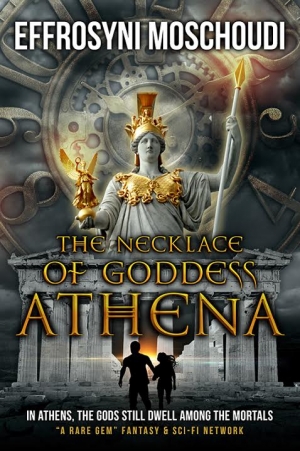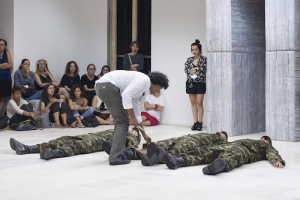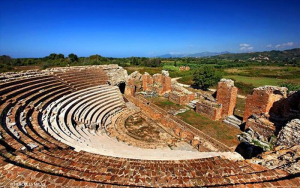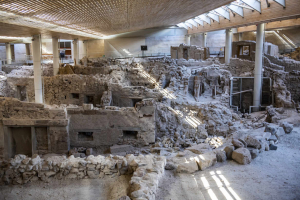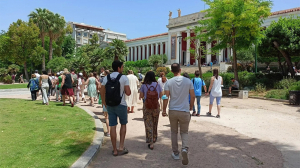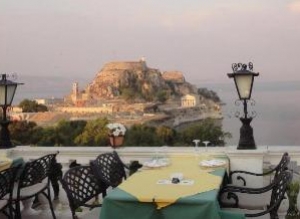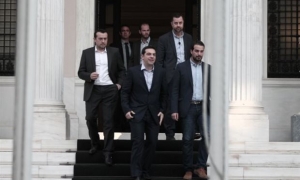XpatAthens
The Necklace Of Goddess Athena
Souvlaki With Gyros Wrapped Pita Breads With Pork & Tzatziki
The most important step in making the perfect, traditional Greek pork gyros souvlaki is nothing else but the pork! Select good quality pork meat, preferably slices of tenderloin and season with a selection of Greek spices like oregano, thyme, garlic and onion. The secret ingredient in this traditional Greek pork gyros recipe is adding a tiny bit of honey and vinegar to the marinade to break the intense pork meat texture. Marinading your pork gyros in the fridge for at least a couple of hours will allow the spices to infuse the gyros and give it the desired aromas.
Politics And Performance Take Centre Stage At Documenta 14 In Athens
Roasted Vegetable Briam In A Savory Sauce
Ingredients
- 4 large potatoes
- Salt and pepper, to taste
- 1/2 cup olive oil, plus more for drizzling
- 1 medium onion, diced
- 4 cloves garlic, finely minced
- 1/2 cup dry white wine
- 1/2 cup fresh dill, chopped
- 1/2 cup fresh parsley, chopped
- A pinch of dried mint
- A pinch of dried basil
- 2 cups tomato sauce
- 1/2 cup of water
- 4 large tomatoes, sliced
- 1 lb. zucchini, sliced into thin rounds
Beyond Coronavirus: Greece To Start Lifting Lockdown Measures
Mitsotakis stressed the importance of keeping sanitary rules and social distancing; he also revealed a new motto, "We Stay Safe," as the sequel of the "We Stay Home" campaign we've seen across the media since the beginning of the outbreak.
In his scheduled speech, the Prime Minister praised Greeks for adhering to the rules and restrictions, adding that Greece "is now ready to proceed to the second phase" of the plan. Below is a timeline of the progressive lifting of safety measures in Greece that will unfold in phases, beginning on Monday May 4 and until mid-June.
Monday, May 4
More specifically, small retail shops such as bookstores, sporting goods stores, and hair salons will open on May 4, while the SMS procedure for leaving our house will also be dropped on the same day. People will be allowed to travel freely within their prefecture of residence, but not outside. For example, those living in Athens can travel freely within the Attica region only. Churches will also re-open for individual prayer, abiding, however, to the strict rules regarding how many worshippers will be allowed in the church at the same time. Church services are still banned.
Monday, May 11
On May 11, senior high schoolers will be able to return to school, and all retail stores will re-open for business.
Sunday, May 17
On May 17, churches will be allowed to resume religious services and sacraments, still having to adhere to firm social distancing safety measures.
Monday, May 18
Further relaxation of the measures will come on May 18, when the rest of the high schoolers will be returning to school. On the same day, archaeological sites will re-open for visitors.
Monday, June 1
Malls, cafes, and restaurants with outdoor seating areas will be back to business on June 1, following social distancing rules. Finally, year-round hotels will open again, adopring all the required public health measures.
Depending on the developments, the rest of the economic activity will resume by mid-June. The Prime Minister also mentioned said that the gradual lifting of the measures is going be to be accessed by a panel of experts every 24 hours.
When To Use A Mask
As the Prime Minister stressed, it is crucial to remember and follow safety measures.
The use of a mask is mandatory by customers and workers in hair and beauty salons and in every service that requires physical contact.
Workers in supermarkets and food shops will also be required to wear a mask. It is strongly recommended that commuters and workers in the public transport system also wear masks.
Due to their susceptibility to the virus, elders are also advised to use a mask.
CLICK HERE to learn more about how to protect yourself, symptoms, and when to seek medical treament.
This content has been sourced and prepared by Codico Lab
Greece's Hidden Archaeological Gems
Here's a list of the lesser-known archaeological wonders of Greece, perfect for history aficionados and those who love sightseeing!
Nikopolis
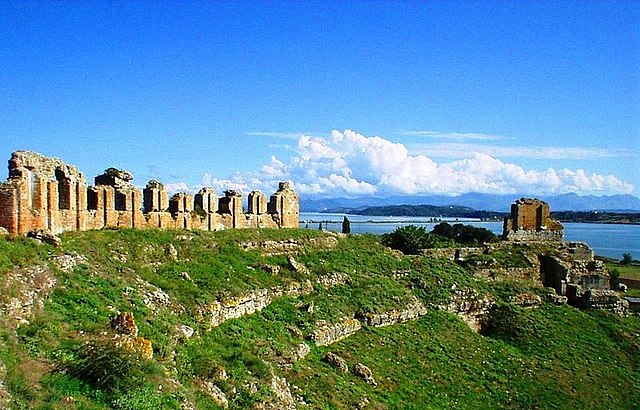
Octavian Theater Nikopolis. Source: Harrygouvas/Wikimedia Commons
Located 7km north of Preveza, Nikopolis, the largest ancient city in Greece, was founded by Octavianus Augustus in 31 BC to commemorate his nearby victory over Antony and Cleopatra in the naval battle of Actium. Every four years, the city celebrated the Actia, festivals including athletic, musical and racing contests. Among the most important monuments that can be found in the area are the Theatre, the Odeum, the Monument of Augustus, and the Nymphaeum.
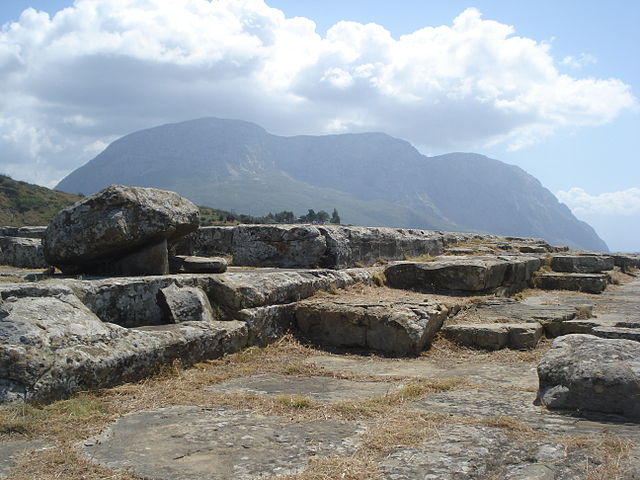
Source: Vasarchit/Wikimedia Commons
The ancient city of Calydon is located about 10km from modern Mesolongi. According to tradition, the town was founded by Calydon, son of Aetolus, and it's mentioned by Homer as one of the five Aetolian cities that participated in the Trojan War. The site is also known for the Calydonian bear sent by Artemis to ravage the area because its king failed to honor her. Today, one can admire the temple of Artemis, Apollo, and Dionysus, as well as the ancient theater and the tomb of the Calydonian hero, Leo.

Source: Augusto Gasbarri/wondergreece.gr
Karthea is the most important of the four ancient city-states of the Cycladic island of Kea. It was founded in the Archaic times and survived until the early Byzantine times. Little remains today from the ancient town, however, the route there is very popular for trekking. Some of the most interesting monuments in Karthea include the Doric temple of goddess Athena and the archaic Temple of Pythion Apollo (530 BC). The Archeological Museum of Kea exhibits parts of this fascinating ancient city.
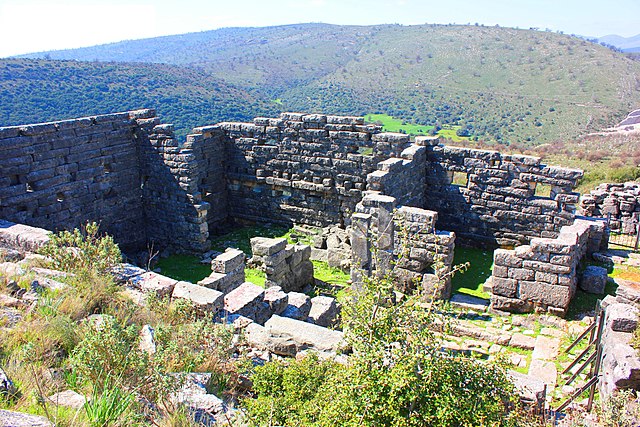
Source: Harrygouvas/Wikimedia Commons
Located in Epirus, the archaeological site of Orraon is sometimes described as the most well-preserved ancient settlement in Greece. It was founded in the 4th century BC, and in 31 BC it was abandoned by its inhabitants who were obliged to settle in Nikopolis. Apart from the exceptional preservation of the stone-built private houses, the defensive character of Orraon is truly remarkable. With massive fortification walls reinforced with towers, this city-fortress was located in a strategic position, guarding the passage from the Amvrakikos Gulf to the Ioannina basin.
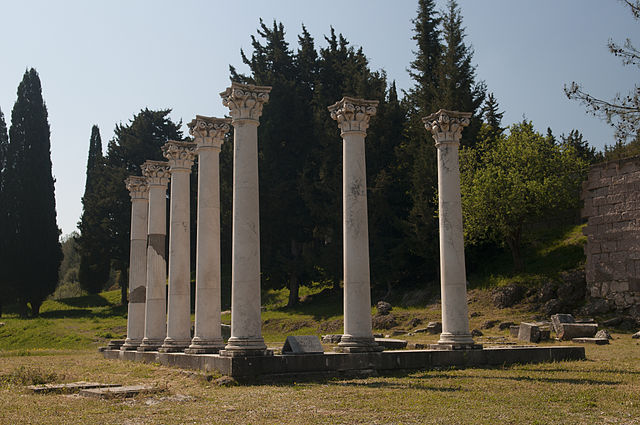
Source: Michal Osmenda/ Wikimedia Commons
Lying off the beaten track for most tourists, Asklepion is perched high above the harbor of the island of Kos. In antiquity, the site served as a sanatorium, and, as the name hints, it was dedicated to Aesculapius, son of Apollo, god of medicine and healing. The site consists of three terraces, the highest one enjoying a breathtaking view of the town of Kos. It might be high up, but admiring the amazingly well-preserved temple is rewarding.
The Pompeii Of The Aegean: The Archaeological Site Of Akrotiri On Santorini
It was one of the most important centers of the Aegean in prehistoric times with the first settlements dating back to the Late Neolithic period (3500-3000 BC).
During the Middle and Early Late Bronze Age (20th-17th century BC), the settlement expanded and became one of the most significant urban and port centers in the Aegean. Its vast area (approximately 200 acres), excellent urban organization, sewage system, multi-story buildings decorated with exquisite wall decorations, luxury furniture, and household items are testament to its significant development.
Akrotiri's network of foreign contacts was particularly extensive, as evidenced by the various imports found in the ruins of the buildings: it maintained close relations with Minoan Crete but was also in contact with mainland Greece, the Dodecanese, Cyprus, Syria, and Egypt. Life in the city came to an abrupt end at some point in the late 17th century BC when its inhabitants decided to abandon it due to strong earthquakes. What followed was a volcanic eruption of the greatest magnitude, around 1600 BC, known as the Minoan eruption of Thera.
The island is believed to have been known, until then, as Strongyle ("circular") due to its round shape; with the eruption of the volcano at its centre, a large part of it was submerged, creating the contemporary shape of Santorini. The volcanic materials covered the city and the entire island, protecting the buildings and their contents to this day, as would later happen in Pompeii.
A visit to the archaeological site of Akrotiri on Santorini is a true journey back in time. Buildings and objects trapped under a thick layer of volcanic material have been preserved intact or have left their imprint. Solidified ash has covered the ruins of the settlement, keeping alive the images of a civilization destroyed by the volcanic eruption. Their exceptional preservation impresses visitors today and has rightly given Akrotiri the name 'Pompeii of the Aegean'.
To read this article in full, please visit: greeknewsagenda.com
Athens City Festival Welcomes Spring With More Than 250 Events
-
Family & the City - Municipal Market of Kypseli - May 12th: Commemorating International Mother's Day, families are treated to a day of creative activities and games, fostering bonds and memories amidst the bustling atmosphere of Kypseli's Municipal Market.
-
Street Outdoors Party - Koumoundourou Square - May 12th: Transforming Koumoundourou Square into an outdoor haven, the Street Outdoors team orchestrates a one-of-a-kind club experience under the open sky.
-
Fairytales in Drakopoulou Square (Patisia) - May 16th: Delight in enchanting stories from around the globe as Georgia Haikali, Marina Dakanali, and Ioanna Riga bid farewell to spring and usher in the warmth of summer in Drakopoulou Square.
-
Piano City Festival - Amerikis Square - May 17th: Immerse yourself in the melodious strains of Piano City Athens as it hosts over 100 concerts, featuring a blend of seasoned artists, emerging talents, and aspiring pianists, promising to stir hearts and souls alike.
-
Spinning Sessions - Municipal Market of Kypseli - May 17th: Witness the transformation of Kypseli's Municipal Market into a pulsating spinning club, where dazzling lights, infectious rhythms, and invigorating workouts converge to ignite the spirit.
-
Flare the Square: Skateboarding Contest - Kotzia Square - May 18th: Prepare for an adrenaline-fueled spectacle as professional and amateur skateboarders showcase their skills in a high-octane tournament set against the backdrop of Athens City Hall.
-
Catwalk of Traditional Costumes of the “Dora Stratou” Theater - Monument of the Airs in Plaka - May 19th: Embark on a journey through time as Lysiou Street in Plaka comes alive with the splendor of traditional costumes from the renowned collection of the “Dora Stratou” Theater, accompanied by the melodious strains of Greek folk music.
-
The Festival of Athens - Plato Academy Park - May 19th: Revel in the rich tapestry of Greek music and dance as folk instrumentalists take center stage, offering a captivating glimpse into the nation's cultural heritage.
-
The Journey of the Kantada, from the Ionian Islands... to Athens - Plaka - May 23rd: Embark on a musical odyssey through the labyrinthine streets of Plaka as the Karaviotis brothers lead a mesmerizing journey accompanied by traditional chants, culminating in an intimate concert at the Museum of Greek Folk Musical Instruments "Phoivos Anogianakis" - Center for Ethnomusicology.
-
Skating with Agia Fanfara - Attikis Square to Agios Panteleimon - May 24th: Join the vivacious antics of Agia Fanfara as they lead a spirited procession through the streets, infusing the air with infectious melodies and boundless joy.
-
La Saramuya Fiesta - Amerikis Square - May 26th: Surrender to the rhythmic allure of La Saramuya as it brings the vibrant spirit of Latin American entertainment to America Square, igniting the senses with pulsating beats and infectious energy.
-
Puppet Theater: Ephemeria - Open Municipal Theater of Kolonou - May 27th: Enter a realm of whimsy and wonder at the Open Municipal Theater of Kolonou, where an innovative puppet show unfolds within the confines of a hospital ward, captivating audiences with its imaginative storytelling.
-
Concert with the Yasemi Quartet & Friends - Mitropoleos Square - May 28th: Experience the harmonious fusion of tradition and modernity as the Yasemi Quartet & Friends take to the stage, weaving together traditional melodies and contemporary arrangements in a spellbinding performance against the backdrop of Athens Metropolis.
-
Food & Wine Experience with a Tour of the National Gallery - May 29th: Indulge in a sensory journey through the hallowed halls of the National Gallery, culminating in a gastronomic feast paired with exquisite wine selections, offering a tantalizing blend of art and culinary delights.
-
Victoria Square Party - Victoria Square - May 31st: Let loose and dance the night away at the Victoria Square Party, where Reverb, a trailblazer in contemporary alternative culture, curates a wild soirée featuring renowned DJs and electrifying musical selections.
-
Attiko Alsos Sunset Street Party - Turkovunia - June 1st: Embark on a picturesque escapade to the hidden "balcony" of the Galatsi region, where the Attiko Alsos Sunset Street Party promises an enchanting experience against the backdrop of the Attic sunset, courtesy of the esteemed group "11 Athens."
-
Athens All Star Party - Lykavittos Parking Lot - June 2nd: Witness history in the making as Athens' foremost promoters converge for the Athens All Star Party at the Lykavittos parking lot, transforming the city's beloved "balcony" into an endless dance floor ablaze with excitement and revelry.
Corfu – An Exquisite Greek Island Destination
Described by Homer as a ‘rich and beautiful land’, the Greek Ionian island of Corfu has delighted the senses of its inhabitants and visitors for centuries. With a rich history deeply entwined in ancient Greek mythology and later subject to numerous battling civilisations, the island has been left with a conglomerate presence of stunning village architecture, fortresses, museums, temples and churches built in turn by the Corinthians, the Romans, the Venetians, the Byzantines, the French and the British.
In ancient mythology, Poseidon, the god of the sea, fell in love with and abducted the beautiful nymph Korkyra to Corfu. Today the main town, Kerkyra, still carries her name.
The island of Corfu offers so much more than the 18-30’s image that may immediately come to mind. After all, this beautiful island was the birthplace of Prince Phillip, the husband of Queen Elizabeth, in 1921 at the Villa Mon Repos. It is also the capital of cricket in Greece, with an oval and full scale cricket ground in the centre of Kerkyra square.
At night, the town is a magical sight of amber-lit Venetian architecture, the Saint Spyridon church tower and many monuments. The shops, restaurants, tavernas and bars buzz until well past midnight with people of all ages from children to grandparents, making for a lively, chaotic yet intimate atmosphere. The locals are friendly and the restaurant owners welcome tourists from all over the world. A must see is the breathtaking and intoxicating, uninterrupted view over the sea front, the Old Fortress, port and the old town experienced on the rooftop bar and restaurant of the Cavalieri Hotel. Succulent local dishes and fresh seafood are offered and can be enjoyed with a glass of your favourite local wine. The chocolate cake dessert completes the divine experience.
To read more, please visit www.travelwithanastasia.com
By Anastasia Paphitis
EU, Germany Warn Greece Over Debt Reduction Ambitions
The European Union and Germany warned Greece's new left-wing government Thursday that there was little support for a reduction in its massive debts, before it holds the first talks with its eurozone partners. Prime Minister Alexis Tsipras will on Friday meet Jeroen Dijsselbloem, the current head of the eurozone group of finance ministers, which Athens said would mark the start of Greece's negotiations on revising the conditions of its bailout deal.
Ahead of the meeting, Greek bank stocks rebounded Thursday after plunging the day before on concerns about the dramatic first moves of Tsipras’s new administration.
The government has begun to roll back years of austerity measures demanded by the EU and the International Monetary Fund in return for a 240-billion-euro ($269 billion) bailout granted to avoid a financial meltdown in 2010, and says it will negotiate to halve the debt.
But European Commission chief Jean-Claude Juncker said a reduction of the 315 billion euro debt linked to the bailout “is not on the radar.”
“I don’t think there's a majority in the Eurogroup... for a reduction of the debt,” he told Germany’s ARD television, referring to the eurozones finance ministers.
To read more, please visit ekathimerini.com

